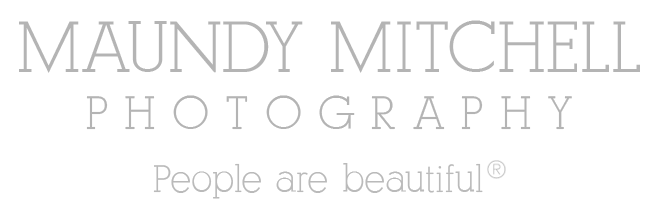Photography is evolving right now. The June cover of Vanity Fair magazine shows a portrait of Janelle Monae, taken by photographer Collier Schorr. As far as I know, it’s the first cover of its kind because it was photographed remotely, live. Schorr’s image appears in the right-hand corner in each of the portraits from that piece, because he photographed the computer’s screen during a Zoom meeting, as he directed his subject.
The images are not what we’ve come to expect of photography: they’re soft, almost out of focus, like the quality of an image made with a pinhole camera. And I love them. The creative director for Vanity Fair wrote, “The evolution of photography relies on technology and creativity. New doors are going to open as image making transforms in unexpected ways.”
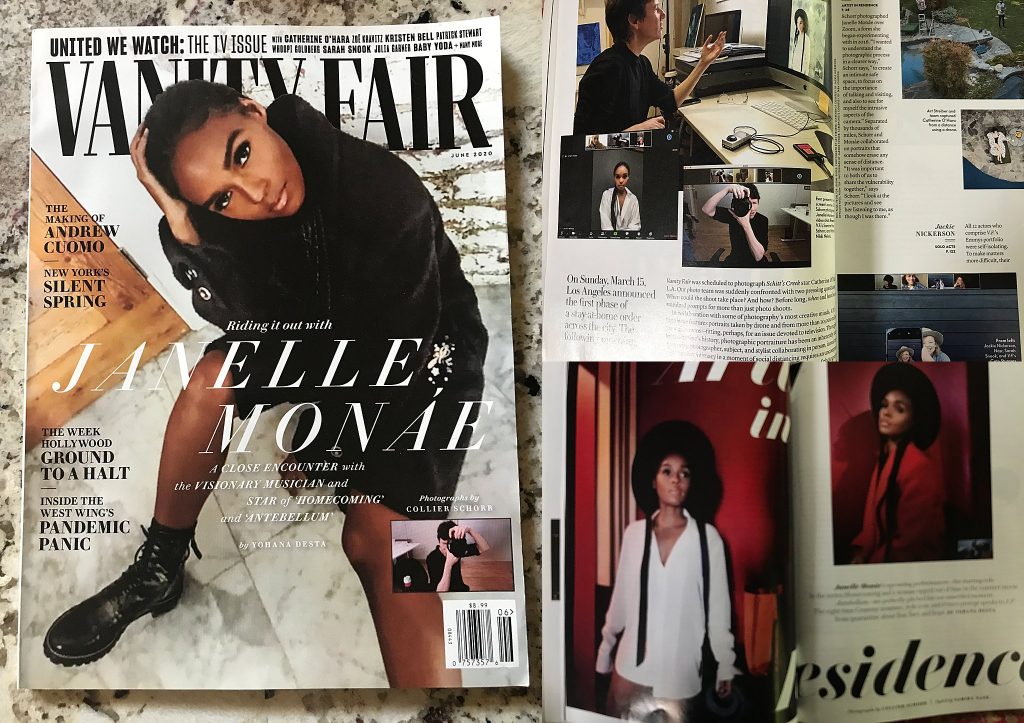
In March I was scheduled to present a talk called “Connection in Portraiture” to the Quechee Area Camera Club in Quechee, Vermont. That, along with almost everything else, was canceled due to the coronavirus.
When my studio shut temporarily due to the pandemic, I began to experiment with using a projector and Zoom to photograph people remotely. I photograph people from all over the world, live, via Zoom. I call the series One World Portraits.
Camera Club president Lisa LaCasse contacted me again about doing a presentation in May via Zoom. The members were interested in learning about the One World Portraits series.
I had been doing these sessions in my home loft office-turned-mini-studio, and projecting people onto a set with a hand-painted backdrop which I had tacked to my tall bookshelves. The set served as sort of a still life, with a picture frame as the place my subject would be projected. For this presentation though, I made a very simple set in my studio. It consisted of a hand-painted backdrop and an antique picture frame on an easel. My friend Christine, who lives in Arizona, agreed to join us as our model.
The setup was more complicated than I had been doing because I used two computers and was in two Zoom meetings at the same time. Also, the presentation was in the evening, and it was a little dark in my studio. Strobes wouldn’t work for this kind of photo shoot, so I set up a couple of continuous light soft boxes. (I actually pointed the soft box on the left at the white ceiling during the shoot, bouncing the light to make it softer, and also to avoid conflicting with the light of the projector).
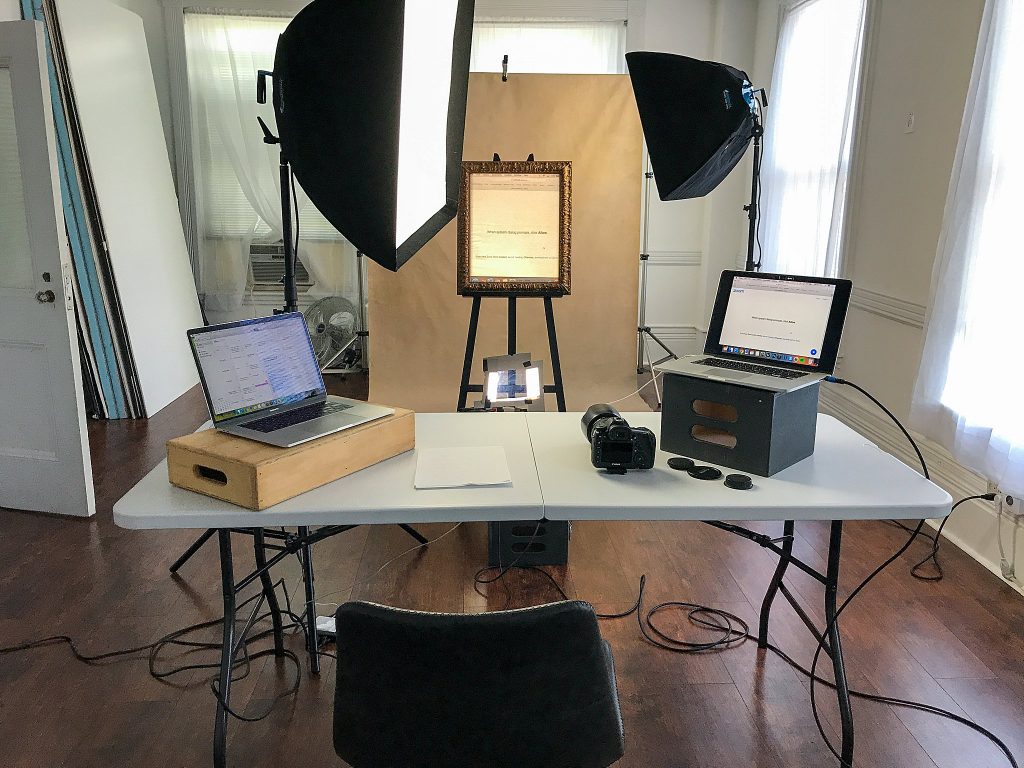
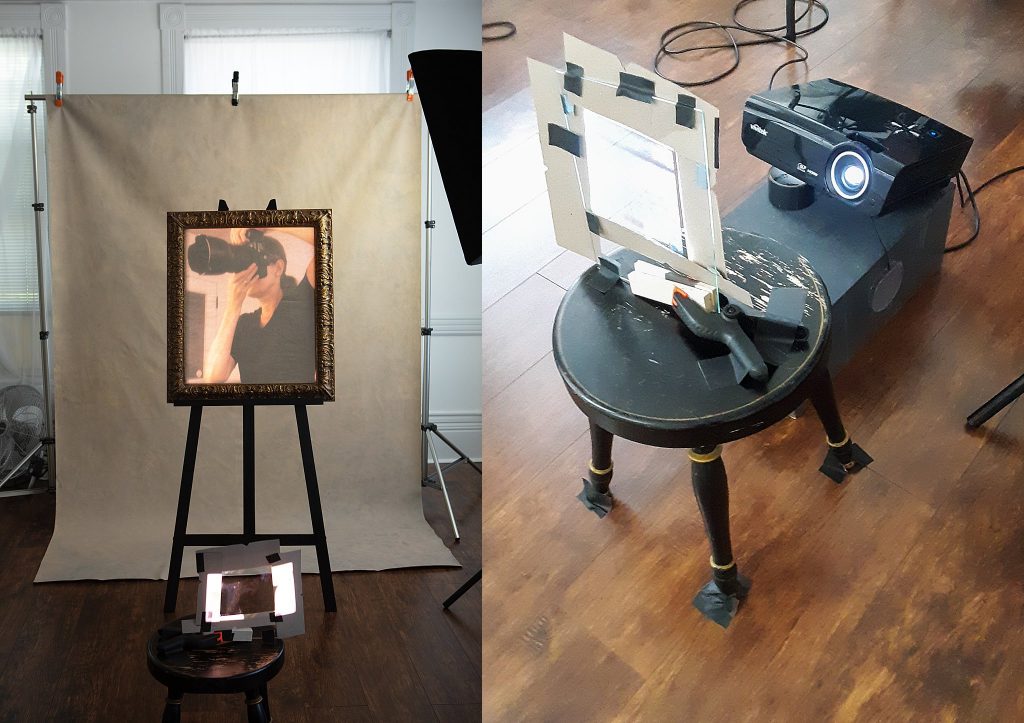
This soft box was feathered to light the backdrop and to avoid conflicting with the light of the projector.
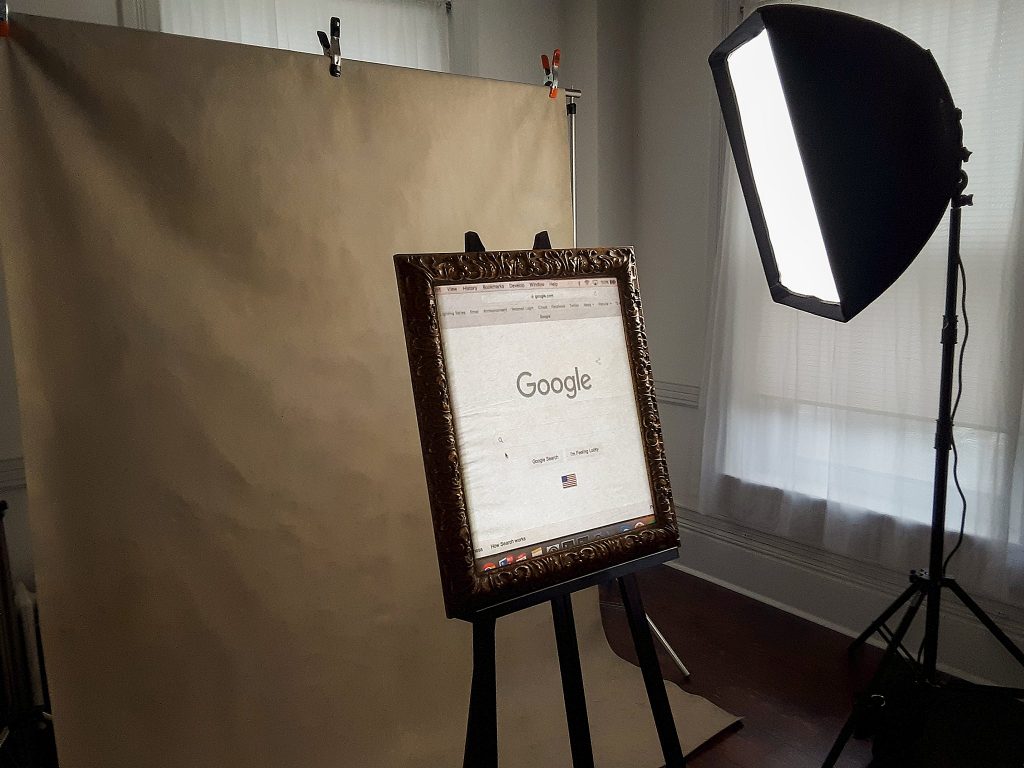
I showed the club members the lighting setup, and how I masked the projector so the subject fills the picture frame, but that light doesn’t spill outside of it. I showed them how to get different colors in the portraits by changing my shutter speed as it works with the projector’s flicker rate. This is another way to embrace the imperfect and the unknown – you can get colors, and stripes of color, but you never know which ones you’ll get. You can avoid the color with a faster shutter speed, or you can create a pop-art effect with a slower shutter speed.

Quechee and the surrounding towns are beautiful. They have a solid arts and tourism culture in the Green Mountains of Vermont. The Quechee Area Camera Club is a diverse and active group of artists, with more than 80 members. I really enjoyed “meeting” them, and interacting with them as the presenter for this virtual gathering.
